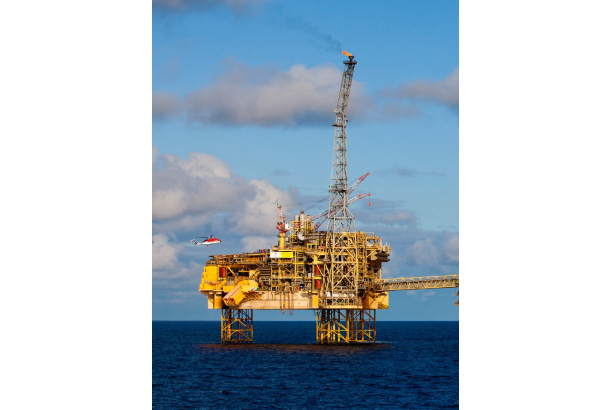Oil & Gas: Fundamentals remain strong; Transitioning underway
by Bhanu Patni, Senior Analyst, Corporates, India Ratings & Research (Fitch Group)
The oil and gas sector faced doldrums in the last 2 years owing to the Covid-19 pandemic. As the demand starts to show signs of recovery, a new variant pushes the growth with another setback. However, the newer wavesare expected to create low-medium impact on domestic demand as these will be more localized with restrictions largely being placed on mobility rather than on industrial activities.The petrol demand had already surpassed pre-Covid levels while diesel demand reached pre-Covid levels in November 2021. Jet fuel, however, continued to remain at around 75% of pre-Covid sales. The most impact of the Omicron spread is expected to be felt on the aviation fuel demand only. Natural gas displayed strong demand even during the nation-wide lockdown last year. With industrial activities continuing, Ind-Ra expects the demand of natural gas to remain robust.
While globally companies in the oil and gas space are transitioning towards alternative investments and working towards carbon neutral themes, India continues to be highly dependent on the sector, therefore, India is expected to remain a laggard. Petroleum product alternatives, including electric vehicles are slow emerging in India compared to the global average. However, Ind-Ra expects the transition theme to start picking up pace over the short-medium term in India as well.
Natural gas demand to increase: Ind-Ra expects the demand for natural gas to remain sturdy and increase in 2022 led by higher demand from the city gas distribution (CGD) and fertilizer sectors. India is the third largest global consumer of natural gas and relies on over 50% demand being met from imports.
Natural gas consumption by the CGD sector increased to 36mmscmd in November 2021, higher than average of 25mmscmd for FY21. The strong demand pick-up was boosted by an inelastic domestic PNG demand and a pickup in industrial PNG and CNG consumption. Ind-Ra expects the demand in the sector to remain robust over the short term, supported by i) a higher adoption of CNG vehicles on account of the steep price differential of over 30% between CNG and diesel on a per kcal basis and ii) a higher demand from new geographical areas and eastern regions due to improved connectivity to natural gas pipelines. However, the increasing adoption of electric buses for public transportation, increase in natural gas prices and lower allocation of domestic natural gas could impact the demand growth over the medium term.
ESG to drive investment thesis:Increasingly, global oil and gas companies are working towards reducing carbon emissions and investing in alternative income streams. Ind-Ra expects, the Indian counterparts to also start acting up in this direction. While, demand and reliance of India on petroleum products is expected to remain strong, with the peak demand for petroleum products estimated to be reached in FY45 for India as compared to FY30 for global demand, the new investments in this sector may remain muted. Indian oil and gas companies have also started to invest in cleaner fuels including CGD, renewables, hydrogen, compressed bio-gas, etc, the same is expected to continue rising. Ind-Ra estimates 5-7% of the total capex in the sector to be diverted towards meeting these targets and the ratio to gradually increase annually.
Infrastructure Development Remains the Key:While transitioning towards natural gas is underway, the infrastructure development remains a key. Ind-Ra notes that for a widespread adoption of natural gas, development of the pipeline network and importing terminals is utmost important. Ind-Ra expects investments in these two to continue in 2022 as well. With pipeline tariff unification underway, the eastern part of India would also be brought under the purview increasing natural gas adoption as price competitiveness will be ensured. Furthermore, with newer terminals on the eastern coast, gas import flexibility will also be there. Ind-Ra believes, the infrastructure development would also aid in higher usage of platforms like Indian gas exchange.
Ind-Ra also notes that the natural gas contracts could undergo changes. Natural gas users till FY21 were looking at tieing up gas on short term contracts as the prices were low, however, in 2022, Ind-Ra expects more medium to long term contracts being signed led by the high volatility in spot prices. The signing up of medium-long term contracts will also bode well for the infrastructure development as it will ensure volume visibility.
Upstream companies’ profitability to remain strong:Profitability of Indian upstream companies is expected to remain sound with both crude prices and natural gas prices at above historical levels. Ind-Ra expects the crude prices to remain rangebound at USD70-USD80/bbl, much above the breakeven estimate of around USD35/bbl for Indian upstream companies. Similarly, the current elevated gas prices, bodes well for the gas production from newer fields which have a free pricing, and the regulated price for the next reset period is also expected to increase further from USD2.9/mmbtu for 2HFY22. Ind-Ra estimates the gas breakeven at around USD3.5/mmbtu. The higher profitability is expected to provide a boost in the capex programs to discover newer fields and also for improving production levels from already discovered fields. Ind-Ra expects the domestic production levels to improve in 2022 to around 25BCM (FY21- 22BCM) with higher production from Reliance Industries Limited’s and Oil and Natural Gas Corporation’s fields in the KG basin.
GRMs could remain low; cracks to remain dependent on global demand revival: During 9MFY22, OMCs’ GRMs remained subdued, despite higher crude prices. While the retail prices of petrol and diesel have risen substantially, partly driven by the higher crude prices and partly by the higher taxes, the crack spreads on these products have remained below par due to the weak demand globally owing to Covid-19 led disruptions. Ind-Ra expects global demand pickup to remain moderate, led by the onset of newer variants impacting the demand and the increasing adoption of electric vehicles and other cleaner fuels for transportation. OMCs profitability therefore, is expected to remain subdued. However, the overall profitability will be supported by the marketing margins and pipeline segment EBITDA.
Downstream integration in Petrochemicals:For most oil refiners, downstream integration into petrochemicals helps in capturing the value chain and also gives a downside protection for demand as well as margins. Ind-Ra expects higher investments being done by refiners for petrochemical integration. Petrochemical spreads, which had hit rock bottom in FY20, gained momentum during FY21 and 9MFY22 and Ind-Ra expects them to remain at moderate levels in 2022, despite the sharp pick-up in feedstock prices especially naphtha. India is a net importer of petrochemicals and pricing remains dependent on international spreads. However, the high current freight and shipping costs have led to higher import prices and therefore, additional marginsfor Indian petrochemical producers.
Credit Metrics to Remain Comfortable: Ind-Ra expects the sector’s credit metrics to remain comfortable. Upstream companies will benefit from the higher profitability, the OMCs will benefit from lower debt on account of subsidies. The subsidies on petroleum products have been done away with since 1QFY22. Furthermore, the deleveraging done by Reliance Industries Limited, has led to overall debt reduction in the sector. Ind-Ra expects the consolidated gross leverage (total debt/EBITDA) to remain strong at below 2.5x for the sector.
















